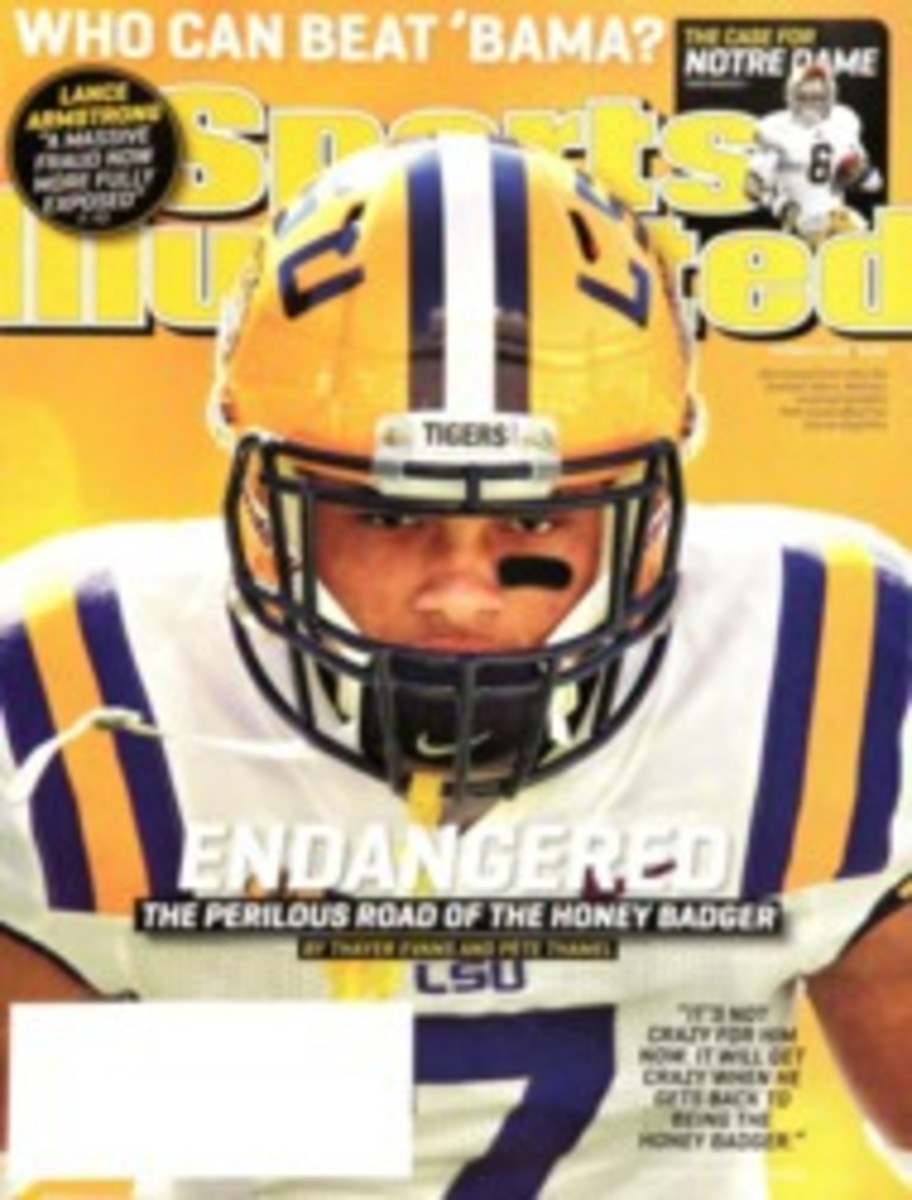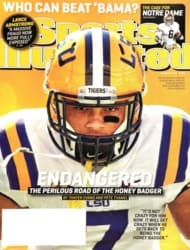
The Case for Oregon
Two seasons ago, Oregon played in the BCS championship game against an SEC team from the state of Alabama and lost on a last-second field goal. As many predicted, Auburn's massive defensive line overpowered the Ducks' undersized offensive line and disrupted their quick-strike offense. What few would have predicted, though, is that Oregon's defense held Heisman winner Cam Newton to 64 rushing yards on 22 attempts in its 22--19 defeat.
America loves the multicolored uniforms and the blur-tempo offense, but, fact is, the Ducks can play defense. They rank 15th nationally in yards per play allowed (4.55), seventh in turnovers forced (17) and ninth in opponents' third-down-conversion rate (29.2%). Coordinator Nick Aliotti preaches much the same philosophy that Tide coach Nick Saban does. In the Ducks' hybrid 3--4, Aliotti blitzes frequently and trusts his corners in man coverage. Sophomore Ifo Ekpre-Olomu has already forced six turnovers. The Ducks are prone to allowing big plays, but they clamp down when it matters; opponents have scored just nine touchdowns on 26 red-zone attempts. Senior linebackers Kiko Alonso and Michael Clay are seasoned run stoppers who have seven and 3½ tackles for loss, respectively.
The tempo of Chip Kelly's offensive attack allows for shorter breaks between possessions, so Aliotti has no choice but to rotate seven or eight defensive linemen to keep them fresh. That depth will be essential if the Ducks have to deal with Alabama's powerful offensive line for 60 minutes. The Ducks would likely focus on stopping the Tide's rushing attack and force quarterback AJ McCarron to beat their excellent secondary. They employed much the same strategy in their 2011 season opener against similarly built LSU. The Tigers won, despite gaining just 273 total yards. This defense is more athletic and experienced than that one was.
Of course, Oregon's offense would score far less than their average of 52.3 points per game. While Kelly's warp-speed no-huddle continues to suck the oxygen out of Pac-12 opponents, nonconference foes with physical defensive fronts (Boise State and Ohio State in 2009, Auburn in '10, LSU in '11) have shown you can get the Ducks out of rhythm by dominating the line of scrimmage. Alabama can use that tactic as well. But no team is suited to run right at the Tide. You need the threat of breakaway speed on the edge, which Oregon has with running backs Kenjon Barner, De'Anthony Thomas and Byron Marshall. The Ducks also have a physical tight end, 6'5", 246-pound sophomore Colt Lyerla (12 receptions for 189 yards and four TDs), who has given opponents fits in the red zone.
But here's one important caveat: Redshirt freshman quarterback Marcus Mariota has been splendid so far (67.9% completion rate, 15 touchdowns, five interceptions), but he's yet to face an elite defense. Fortunately for Mariota, he's got no shortage of weapons around him—and a defense that ensures he won't have to win a shootout.
BCS MATRIX
See who else has a puncher's chance against the Tide.
PHOTO
STEVE CONNER/ICON SMI (OREGON)
FULL STABLE Marshall, a freshman, has emerged as another weapon in the ground game, along with Barner and Thomas.

